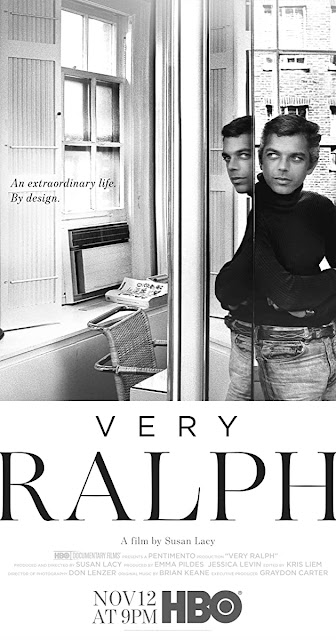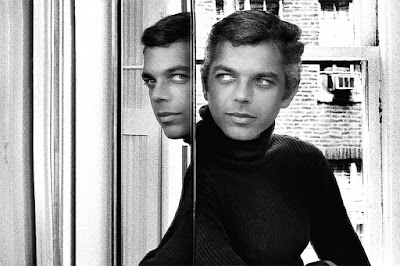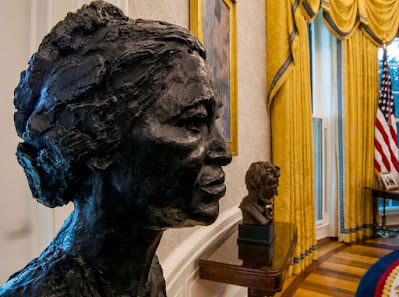COMMENT
A tribute to Gavin Stamp (1948–2017)
Thomas
Marks 4 JANUARY 2018
https://www.apollo-magazine.com/a-tribute-to-gavin-stamp-1948-2017/
Gavin
Stamp, who has died at the age of 69, was a resolute champion of good
architecture. As one of the most eloquent architecture critics of his
generation, he brought his vast learning to large numbers of readers who might
otherwise have overlooked debates about architecture and how profoundly it
shapes our lives (not least as ‘Piloti’, author of the Nooks and Corners column
in Private Eye); as a passionate and dauntless campaigner, he fought for the
preservation of many historic buildings suffering negligence or threatened with
demolition, and against the wanton development of this country’s historic urban
fabric. In his writing he took no prisoners, but in person he was as gentle and
courteous as they come.
As Apollo’s
architecture columnist, Gavin wrote more than 150 stylish, argumentative
articles for the magazine – expansive in their scope, exuberant in their
curiosity, and unfailingly generous with their knowledge. The first, published
in May 2004, was what he later described as ‘an opportunity to rehearse the
scandal of the mutilation and desecration of one of the great Mediaeval
buildings of Europe, King’s College Chapel’; the last, which appeared in the
December 2017 issue, celebrated the overlooked contribution of women architects
in Britain, closing with sharp criticism of those who continue to question
Elisabeth Scott’s authorship of the Shakespeare Memorial Theatre at Stratford.
His columns often unfurled into polemic in this way, but not before readers had
been beguiled by their elegant and enlightened stitching of architectural
history and description.
In the preface
to Anti-Ugly: Excursions in English Architecture and Design (2013), a selection
of his writing for Apollo, Gavin wrote that the column encouraged him ‘to
ponder, research and write as best I can’. ‘Rereading my articles’, he wrote,
‘made me realise that many are, to a degree, autobiographical, but I hope this
may be forgiven.’ They were of course so much richer for his decades of looking
at, and thinking and writing about buildings, and reflected so many of his
detailed passions. There would always be room for an aside about his beloved
Sir Edwin Lutyens, the focus of two books (one a thoughtful and inspiring study
of the Thiepval Memorial to the Missing of the Somme), and for Sir Gilbert
Scott and his dynasty (Gilbert Scott Jr, the eldest son of Sir Gilbert, was the
subject of his PhD thesis; Stamp’s illustrated biography of the latter, Gothic
for the Steam Age, was published in 2015).
There were
the churches, plenty of them, which Gavin so cherished and the latter-day
vandalism of which so angered him. And there were celebrations of the buildings
in places that had structured his own life – from Scotland, where he had taught
at the Mackintosh School of Architecture in Glasgow from 1990 until 2003, to
India and latterly Croatia, where he had enjoyed travelling in recent summers
with his second wife, Rosemary Hill, the writer and biographer of A.W.N. Pugin.
It was my
privilege to inherit Gavin, so to speak, when I became the editor of Apollo in
2013, and to have edited his monthly columns since the previous year (the
column was first commissioned by my predecessor but one, Michael Hall). Reading
any new piece – carefully numbered up to the final article, 154 – always
brought a sense of wonder at the masterfully condensed learning, at Gavin’s ear
for the piquant or wry quotation, and at the strength and persuasiveness of his
opinion on subjects that ranged far and wide, from pubs and seaside pavilions
to architects’ portraits and blue plaques. And there was the pleasure of
learning to share his valuable fastidiousness about architectural photography
(the history of photography was another of his great fields), from his friendly
complaints about converging verticals (‘which I abhor’) to a wider feeling for why
it matters so much to record and represent buildings with the utmost clarity
and care. We were lucky to be able to print in Apollo so many of Gavin’s own
excellent photographs, which he had been taking and archiving for decades.
But greater
than the privilege of editing Gavin was that of getting to know him, and
hearing him speak of the buildings, places, and causes that had become such
personal concerns to him (in the last 18 months, he often signed off with a
gloomy note about Brexit: ‘Bugger Brexit (but where now?)’). When we last met,
while he was undergoing chemotherapy last summer, we talked about ‘gloomy’
politics and the columns that might come: on the Italian fascist architect
Marcello Piacentini, on the Chinese Palace in Palermo, and, when it reopened,
on Guarini’s great Cappella della Sacra Sindone in Turin. Whatever the subject,
you always wanted to read anything that Gavin had to say about it.
The
architectural journalist Ian Nairn was another of Gavin’s heroes. On the 30th
anniversary of Nairn’s death, he wrote that ‘So much of what [Nairn] wrote,
excoriating the impersonal, is all too relevant today.’ Gavin, like Nairn, has
died before his time – but we will want to keep reading him, and will need to
keep campaigning in his memory, for many decades to come.
A full
obituary of Gavin Stamp will appear in the February issue of Apollo.
Gavin Stamp obituary
Architectural historian who campaigned to save notable
buildings from destruction
For nearly 40 years, Gavin Stamp’s pseudonymous column
in Private Eye waged war on the property developers and planning authorities
who disfigured British towns with their greed and ineptitude
Ian Jack
Sun 7 Jan
2018 14.19 GMT
https://www.theguardian.com/artanddesign/2018/jan/07/gavin-stamp-obituary
Gavin
Stamp, who has died aged 69 after suffering from cancer, was an architectural
historian and campaigner whose scholarship and enthusiasm promoted the
understanding and reputation of several great but neglected architects, and
helped save many fine 19th and 20th century buildings (he would say not nearly
enough) from the wrecker’s ball. As a writer and conservationist he followed a
tradition set by John Betjeman and Ian Nairn, both of whom he admired, and for
nearly 40 years his pseudonymous column in Private Eye waged war on the property
developers and planning authorities who disfigured British towns with their
greed and ineptitude. Stamp concluded that their disregard for history,
especially in the shape of Victorian buildings, was a form of national
self-hatred.
His passion
for buildings first appeared when, as a boarder at Dulwich college, he filled
his weekends by exploring the streets of south London and southern suburbs such
as Bromley, where he was born. Like most pupils in the days of the so-called
Dulwich Experiment, he had a free place at the school (funded by a local
authority grant) – a fact that he was keen to stress later in life whenever he
was mistaken for a typical product of a paid education.
His
ancestry was distinguished but nonconformist by tradition and neither lavish
nor rich. One great-uncle, Josiah Stamp (later Lord Stamp), was an economist
and public servant who rose to become chairman of the London, Midland &
Scottish Railway; another great-uncle, Sir Dudley Stamp, was an eminent
geographer. Their father had been manager of WH Smith’s railway bookstall in
Wigan before coming south to establish a small London grocery chain, Cave
Austin, which his grandson, Gavin’s father, Barry, inherited and – in the face
of competition from the new supermarkets – failed to sustain; Gavin’s mother,
Norah (nee Rich), had also been involved in the business, travelling around in
her mini to inspect the stores. Later Barry became a driving instructor, which
some people think explained Gavin’s life-long hatred of cars. He never learned
to drive one.
At Gonville
and Caius College, Cambridge, he took a history degree that included
architectural history, and back again in south London, this time in a bedsit,
began to piece together a freelance life that revolved around the Architectural
Press, publisher of the Architectural Review. He was a fine and largely
self-taught draughtsman and drew sketches and plans for the anti-modernist
architect Roderick Gradidge, and helped the curator John Harris catalogue the
Royal Institute of British Architects’ drawings collection; some years later,
in 1977, he organised and designed the catalogue for the RIBA’s Silent Cities
exhibition on the war memorials of the first world war, which was the start of
a lasting absorption with that war’s physical remembrance.
His visits
to the offices of the Architectural Press – and, just as important, to the pub
beneath it in Queen Anne’s Gate – introduced him to celebrated contributors
such as Osbert Lancaster, Betjeman and Nikolaus Pevsner. He became particularly
close to Betjeman and it was at Betjeman’s suggestion that Stamp took over the
Private Eye column, Nooks and Corners of the New Barbarism, that the poet had
founded in 1971 and that his daughter Candida had continued.
Stamp took
the pseudonym Piloti, which are the piers on which a lot of modernist
architecture rests, and wrote his first column in 1978. His last, published
only a week before he died and as pungent as always, suggested that Britain
needed some new architectural prizes: the Attila the Hun award for vandalism
that never ceases (won this year by Liverpool city council “for its cynical
indifference to World Heritage status”); and the Emperor Nero award for
fiddling while Rome burns (won by the House of Commons for its reluctance to
leave a decaying building, because MPs understand too well that its
magnificence is the only thing that still “gives dignity and status to this
collection of mediocrities”).
It would be
fair to say that by the early 1980s, Stamp gave a very good impression of a
Young Fogey. He had a Cambridge PhD in the work of an early hero, the Victorian
Gothicist George Gilbert Scott junior, the son of the more famous George
Gilbert Scott senior, and lived in a little house with his wife, the writer
Alexandra Artley, almost in the shadows of the senior Scott’s most famous
creation, St Pancras station. He wrote for the Spectator and the age of denim
never touched him: he wore tweed jacket, scarves and polished shoes.
London
seemed his inevitable home, until in 1990 he took a job lecturing in
architectural history at the Glasgow School of Art and moved with his family to
a terrace house built and inhabited by the Scottish architect Alexander “Greek”
Thomson in the mid 19th century. Stamp became one of Thomson’s great champions
at a time when his architectural legacy was imperilled (as a few of his
buildings still are), and founded a society in Thomson’s name that helped
elevate his reputation close to that of a later Glasgow architect, Charles
Rennie Mackintosh.
Stamp
became a senior lecturer and then a professor in Glasgow, and made friends with
unfogeyish Glaswegians such as the former shipyard worker and Marxist Jimmy
Reid – a man he tremendously admired. But the Glasgow years were eventually
unhappy: the restoration of his house was unaffordable, his marriage failed,
and in 2003 he returned to London, where he worked as a writer and occasional
lecturer.
In 2014, he
married Rosemary Hill, the biographer of Augustus Pugin and widow of the poet
Christopher Logue, for whom Stamp had designed a handsome memorial stele in
Kensal Green cemetery much in the style of Greek Thomson and erected the year
before. The wedding party, befitting Stamp’s 20-odd years as chair of the Twentieth
Century Society, took place in an upstairs room at the Festival Hall.
Stamp’s
scholarship deepened our understanding of architects such as Scott, Thomson and
Edwin Lutyens, as well as more minor figures including Robert Weir Schultz, who
worked for the medievalist John Crichton-Stuart, third Marquess of Bute. He was
among the first writers to take a serious interest in the colonial architecture
of India, and his early concern about the fate of the telephone boxes designed
by Giles Gilbert Scott (grandson of the first GG Scott) inspired the campaign
that saved many of them.
In later
life, he sometimes fretted that he had “wasted his time” writing journalism and
catalogue introductions rather than “proper books”. Nevertheless, his short
history of Lutyens’ great building at Thiepval, The Memorial to the Missing of
the Somme (2006), has taken its place among the most memorable accounts of the
western front: a book that has all Stamp’s characteristic anger, lucidity and
compassion.
The same
qualities moved Stamp leftwards in his politics, until the Britain he was born
into, Attlee’s Britain, became a kind of rear-mirror utopia. His last wishes
specified an Anglican funeral ceremony and a south London cemetery – and that
in the coffin he wore the lapel badge of his last great cause: “Bugger Brexit”.
Through his journalism, his campaigning work and his fierce independence, it
was Stamp, arguably more than any writer since Betjeman, who made sure that
architecture remains high in the list of British public concerns.
He is
survived by Rosemary; and by the two daughters of his first marriage, Agnes and
Cecilia.
• Gavin
Mark Stamp, journalist and architectural historian, born 15 March 1948; died 30
December 2017
• This
article was amended on 9 January 2018. Gavin Stamp’s PhD was on the work of
George Gilbert Scott junior rather than George Gilbert Scott senior. He raised
concerns about the fate of the telephone boxes designed by Giles Gilbert Scott,
the first GG Scott’s grandson.
Obituary: Gavin Stamp, 1948-2017
8 JANUARY
2018 BY ALAN POWERS
https://www.architectsjournal.co.uk/news/obituary-gavin-stamp-1948-2017
Alan Powers
looks back at the life and work of the architectural critic and historian who
died at the end of the year
Gavin
Stamp, who has died aged 69, was a writer, teacher, broadcaster and activist in
architecture and conservation. He connected emotionally with buildings (also
railways and aircraft) at an early age, and, like John Betjeman, was able to
project his enthusiasm, understanding and sense of protectiveness towards them
to a wide audience. His style was brisk and sometimes brusque; preferring facts
to theories, and valuing people and anecdotes as means to relive the
imaginative experiences of the past.
Finding the
experience of James Stirling’s History Library at Cambridge a let-down, modern
architecture and its smooth talkers were henceforth always under suspicion, and
Stamp became a leader in a growing revisionist movement in architectural
history and conservation. His PhD in 1978 was published in 2002 as Architect of
Promise: George Gilbert Scott Junior (1839-1897) and the Late Gothic Revival.
Working freelance in journalism and part-time teaching from an overcrowded
Gothic Revival attic in Borough, he took over the Nooks and Corners column in
Private Eye, started by Betjeman, as well as writing regularly for the
Spectator.
The
exhibitions Silent Cities (on war memorials) and London 1900 at the Heinz
Gallery, held in 1977 and 78 respectively, were part of a project that
culminated in the popular success of the 1980-81 Arts Council Lutyens
exhibition at the Hayward Gallery. But he was already beginning to change some
of his views, enjoying the company of such outspoken and hard-drinking
Modernist survivors as Ernö Goldfinger (on whom he and James Dunnett presented
an exhibition at the AA in 1983) and Berthold Lubetkin.
Stamp
played a significant role in shaping a pluralist policy for the extension of
post-war listing during the 1990s
In 1983,
Stamp succeeded Bevis Hillier as chairman of the Thirties Society (renamed the
Twentieth Century Society in 1992) and he continued in this role until 2007,
leading annual foreign trips where he explored newly opened east European
capitals. The pace was fast and furious, with minimal and largely liquid lunch
breaks and stragglers left behind if they didn’t get back on the coach. The same
rules applied when he ran the annual Victorian Society Anglo-American Summer
School.
In 1988,
the 1939 limit for listing buildings was extended with a conveniently
conservative Trojan horse in the form of Bracken House, built in the 1950s.
With other members of the Thirties Society, Stamp played a significant role in
shaping a pluralist policy for the extension of post-war listing during the
1990s, starting to build his own selective sympathy for the more romantic kinds
of Modernism.
This
process continued when he went to teach history at the Mackintosh School of
Architecture for a period of 10 years. With his first wife, the journalist
Alexandra Artley, and their two daughters, he lived in the house in Moray Place
built by Alexander ‘Greek’ Thomson for himself. Stamp went on to found the
Alexander Thomson Society and curate an exhibition with book on Thomson in
1999.
Recalling
one of Stamp’s memorable and always unscripted lectures, on Lutyens’s Thiepval
memorial on the eve of the 2003 Iraq war, Carmody Groarke associate Lewis
Kinnear writes: ‘His oratory had such strength that it unequivocally reinforced
and concluded all his preceding teachings, asserting that even with the
greatest of weights, architecture has the agility to be political, cultural and
engrain timeless lessons.’
After an
interlude in Cambridge working on a survey of British architecture in the
interwar period, Stamp returned to London (definitely south London, where his
roots lay). He was disappointed not to find any official position in teaching,
but settled back into the freelance life, contributing a monthly column to
Apollo (some collected in the 2013 book Anti-Ugly), becoming a grumpy travel
presenter on TV and writing a successful series of books that drew on his
interest in researching historic photography of buildings and deploring the
loss of good urban scenery by bombs, venal councillors and developers.
In 2014, he
married Rosemary Hill, the Pugin expert. His last years were overshadowed by a
sense of time running out, but he was able to bring forward long-delayed
projects such as a book on Giles Gilbert Scott.

































